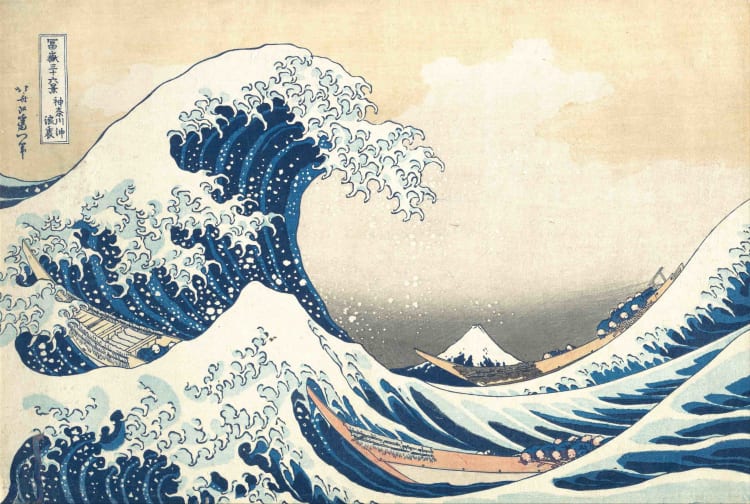The Great Wave off Kanagawa by Hokusai is probably the most famous Japanese print in the world. This woodcut fascinates far beyond the Japanese borders. Let's discover together this emblematic work of Japanese art.

Who was Katsushika Hokusai?
Katsushika Hokusai was a Japanese engraver, draftsman, painter and writer born in 1760 in Tokyo. In his time, the city was called Edo. Hokusai was the author of very popular writings in Japan. He was nicknamed the "Old Drawing Madman" because he was a very prolific draftsman. During his life, he produced no less than 30,000 drawings.

Fuji on a clear day, Katsushika Hokusai, 1830-1832
Hokusai was one of the key players of the Ukiyo-e movement, a term which means "Image of the floating world in Japanese". This movement revolves around two main practices: popular and narrative painting, and the production of prints engraved on wood.
The subjects tackled by Ukiyo-e correspond to the interests of the Japanese bourgeoisie of the time, for example: representations of famous places and life scenes, fantastic creatures, calendars, greeting cards, erotic scenes, sumo, kabuki theater.

Fisherman in Kajikazawa, Katsushika Hokusai, 1830-1832
You will have understood that Hokusai worked during a period when the production of prints was in full swing in Japan. A particularly propitious context for innovative artistic experiments.
The Japanese artist is often considered as the inventor of the term "Manga" which can be translated as "Free Drawing" in English. Hokusai is a major artist of the 19th century. Now, let's focus on his famous wave.
A masterpiece of Japanese printmaking
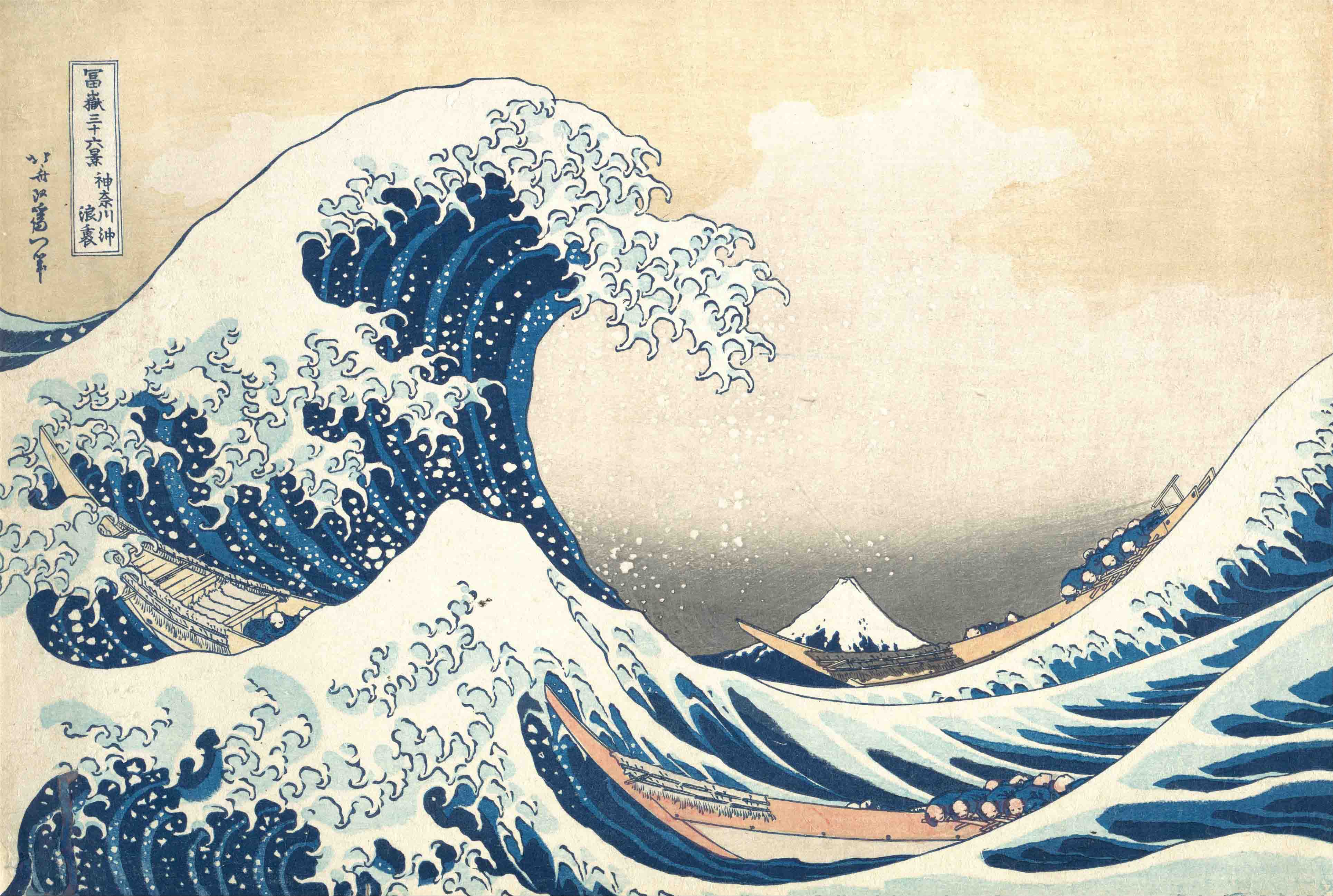
The Great Wave off Kanagawa, Katsushika Hokusai, 1830-1831
"The Great Wave off Kanagawa" was published by Hokusai in 1830 or 1831. It is in landscape format, its height is about 26 cm and its width 38 cm. Usually, Japanese prints were printed in several hundred copies, the first prints being the most qualitative in the rendering of colors and lines.
Hokusai was very successful with this print, he produced only 46 copies of "The Great Wave off Kanagawa". Several copies are held by major museums such as: the Metropolitan Museum of Art in New York, the Guimet Museum in Paris, the British Museum in London, the National Library of France in Paris. Now let's immerse ourselves in this print to better understand its meaning and its impact on art history.
A gigantic wave
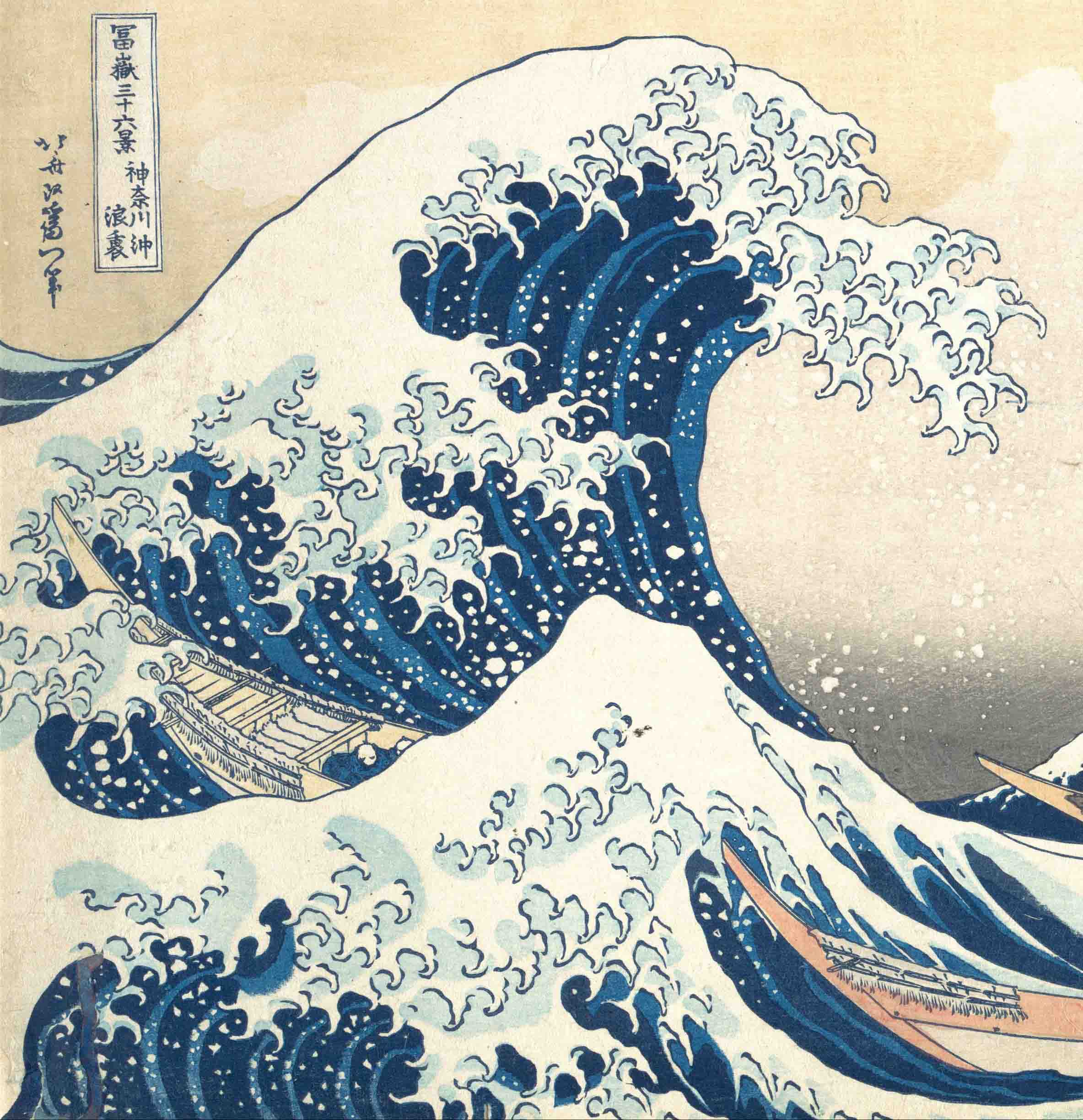
Unpredictable and colossal, this offshore wave is the star of this work. Its height and thickness make you dizzy. This double wave occupies an important place on the print, almost half of the work.
Hokusai shows the force of nature facing man and the result is stunning. One is immediately attracted by this wall of water that unfurls and rises in front of these fishing boats.
This two-dimensional print is precise and realistic, Hokusai has given it depth through the lines and colors. The wave plays a central role here, indeed, Mount Fuji seems tiny next to it.
The majestic Mount Fuji in the background
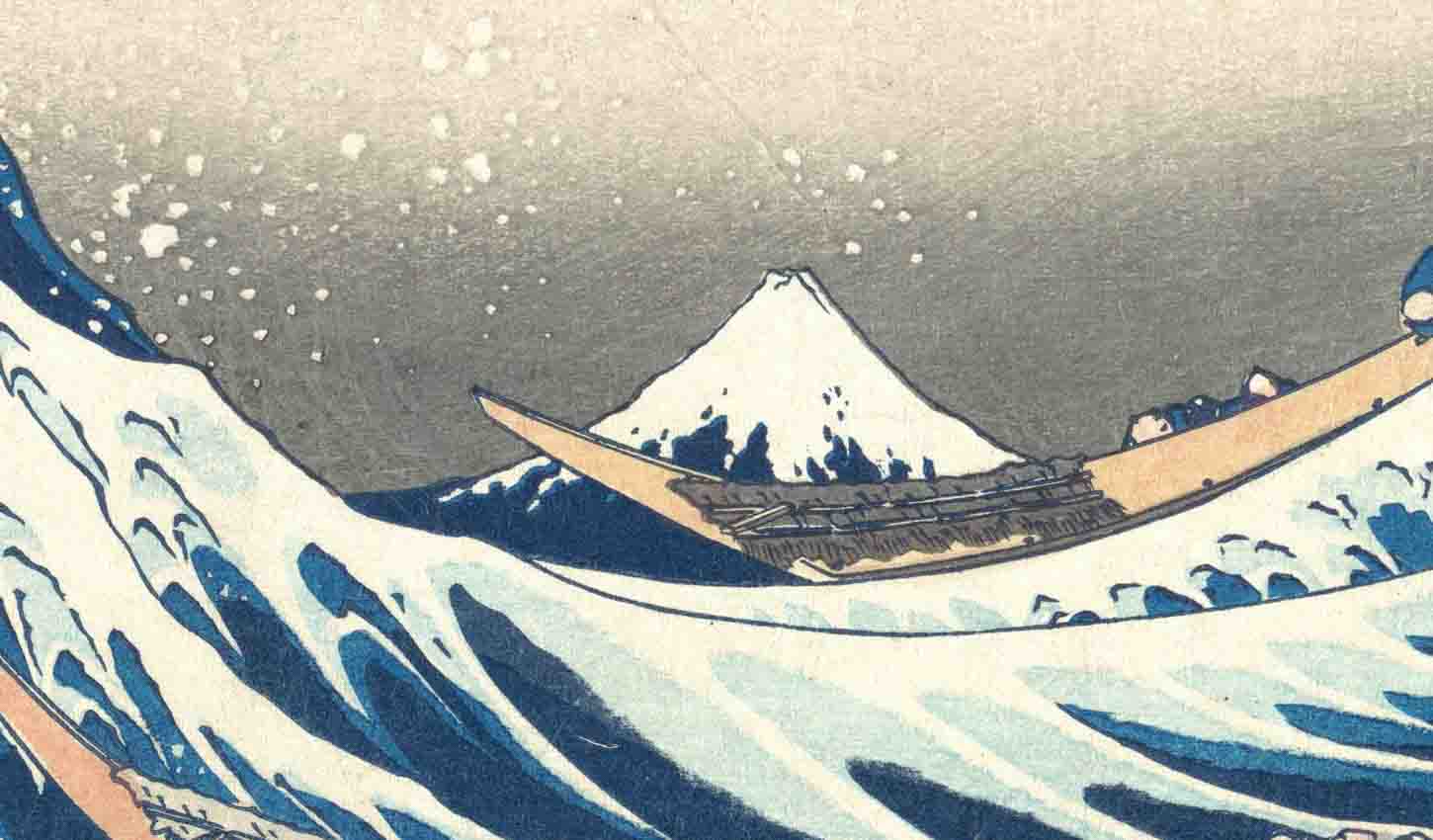
In Japan, Mount Fuji is a sacred and symbolic place where one can retreat, make a pilgrimage to rest the spirit. The illustrious volcano peaks at 3,776 meters. It looks tiny in this work. The framing chosen by Hokusai gives us the impression that Mount Fuji will be engulfed by this immense wave of the Pacific Ocean.
Through this print, the Japanese artist offers us a striking constrat between this eternal, imperturbable mountain and the natural elements that are unleashed.
Fishermen's boats in the middle of a storm at sea

In the middle of a raging sea, three fishing boats struggle to avoid sinking. These small boats are probably "Oshiokuribune". They are small ships that used to supply the Edo Bay with goods. These Japanese boats were known for their seaworthiness, they could reach high speeds while remaining stable.
In this scene that has become mythical, the fishermen are swept away by the swell and the sea currents, they are as if trapped. In spite of the movements of the sea, the boats and their occupants do not seem to be in panic, they even give off a certain serenity. Hokusai has therefore managed to produce a scene that is both serene and intense.
The Prussian Blue
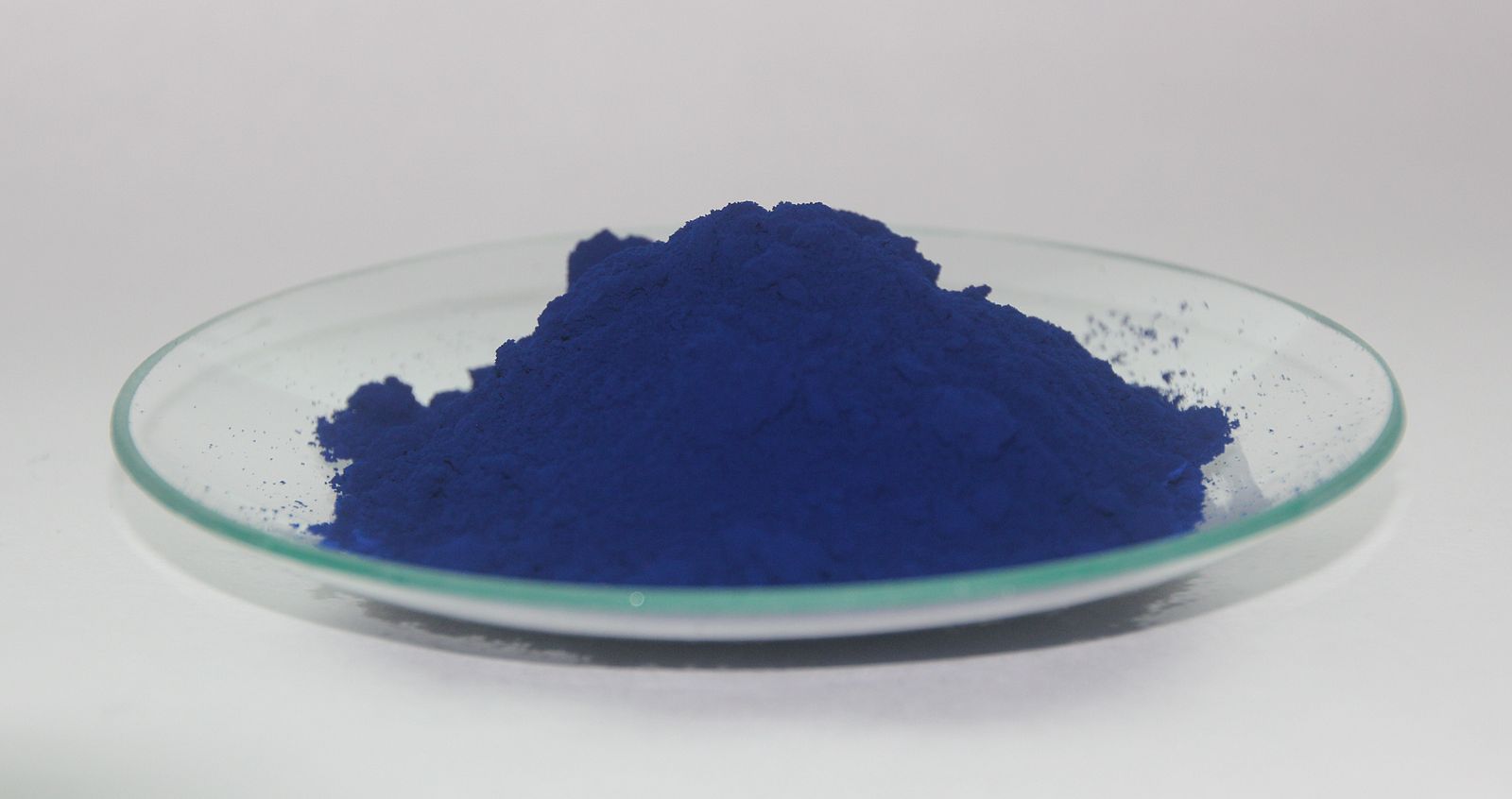
This print is undoubtedly the most famous of Japanese art, it is the first work of his series "Thirty-six views of Mount Fuji". In this series, Hokusai made extensive use of Prussian blue.
It was around 1820 that Prussian blue was imported to Japan. It quickly became popular among Japanese engravers and painters. This blue is deep and perfectly integrated into the palette of Japanese artists of the time. However, because it was an imported product from Holland, it was quite expensive and therefore reserved for a certain artistic elite.
On "The Wave", Prussian blue occupies about 20% of the surface of the work, this blue gives a rhythm and an incomparable power to this scoundrel wave.
A print that has influenced many European artists
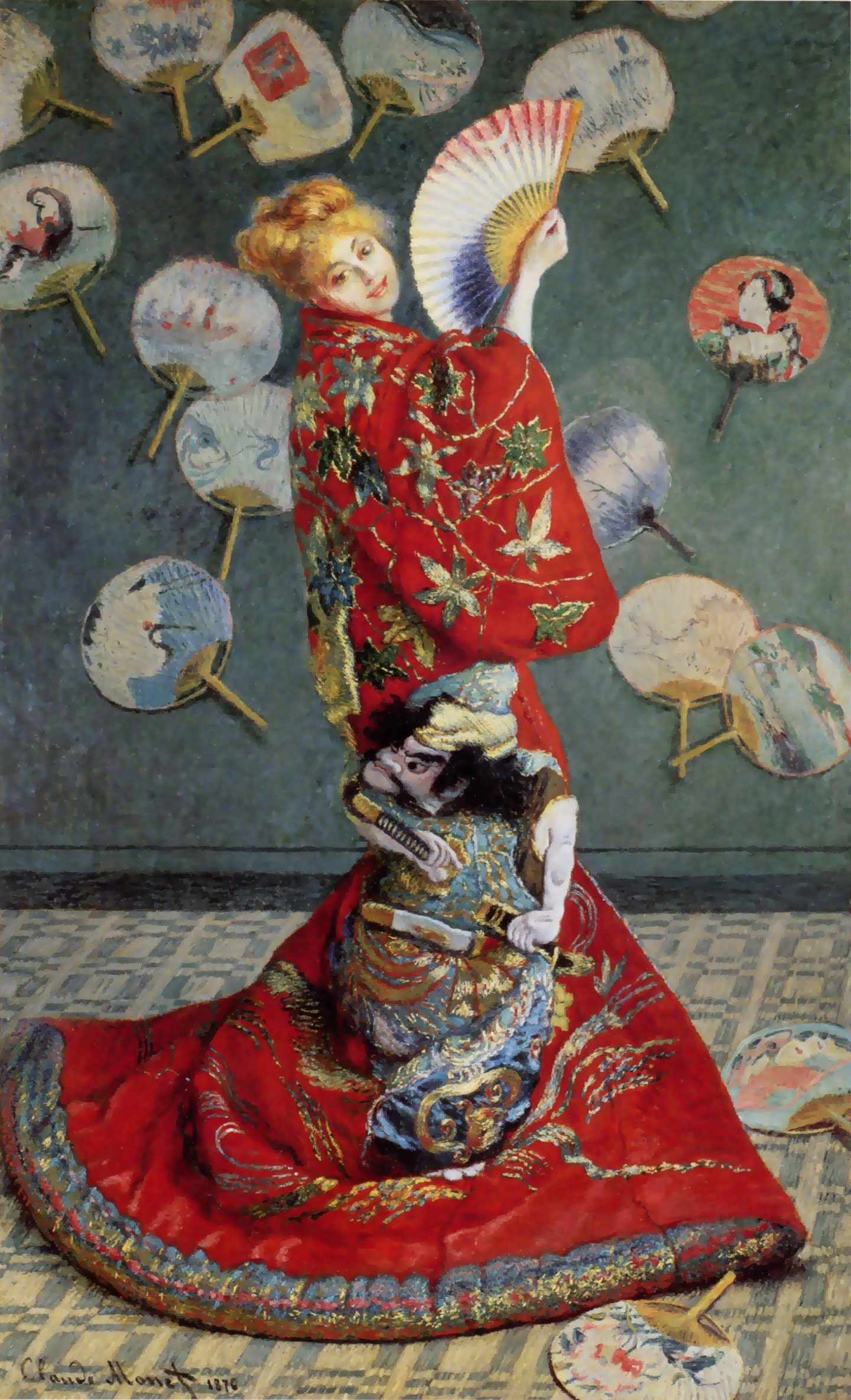
The Japanese, Claude Monet, 1876
In the middle of the 19th century, Japanese art was introduced in Europe. Japonism first appeared in France. It corresponds to the influence exerted by Japanese civilization and art between 1860 and 1890 on artists and writers, first the French, then those of the West.
Ukiyo-e became a great source of inspiration for European impressionist painters and then for Art Nouveau artists. For Raymond Isey, "Japan was the equivalent of the discovery of a new aesthetic continent".
Among the collectors and followers of Japanese art were artists such as Vincent Van Gogh, Claude Monet, Edgar Degas, Auguste Renoir, Camille Pissarro, Gustav Klimt, James Tissot, James Whistler, Mary Cassat, Auguste Rodin or Giuseppe de Nittis. These artists were particularly fascinated by "The Wave" because of its innovative perceptive, its colors and the subject represented.
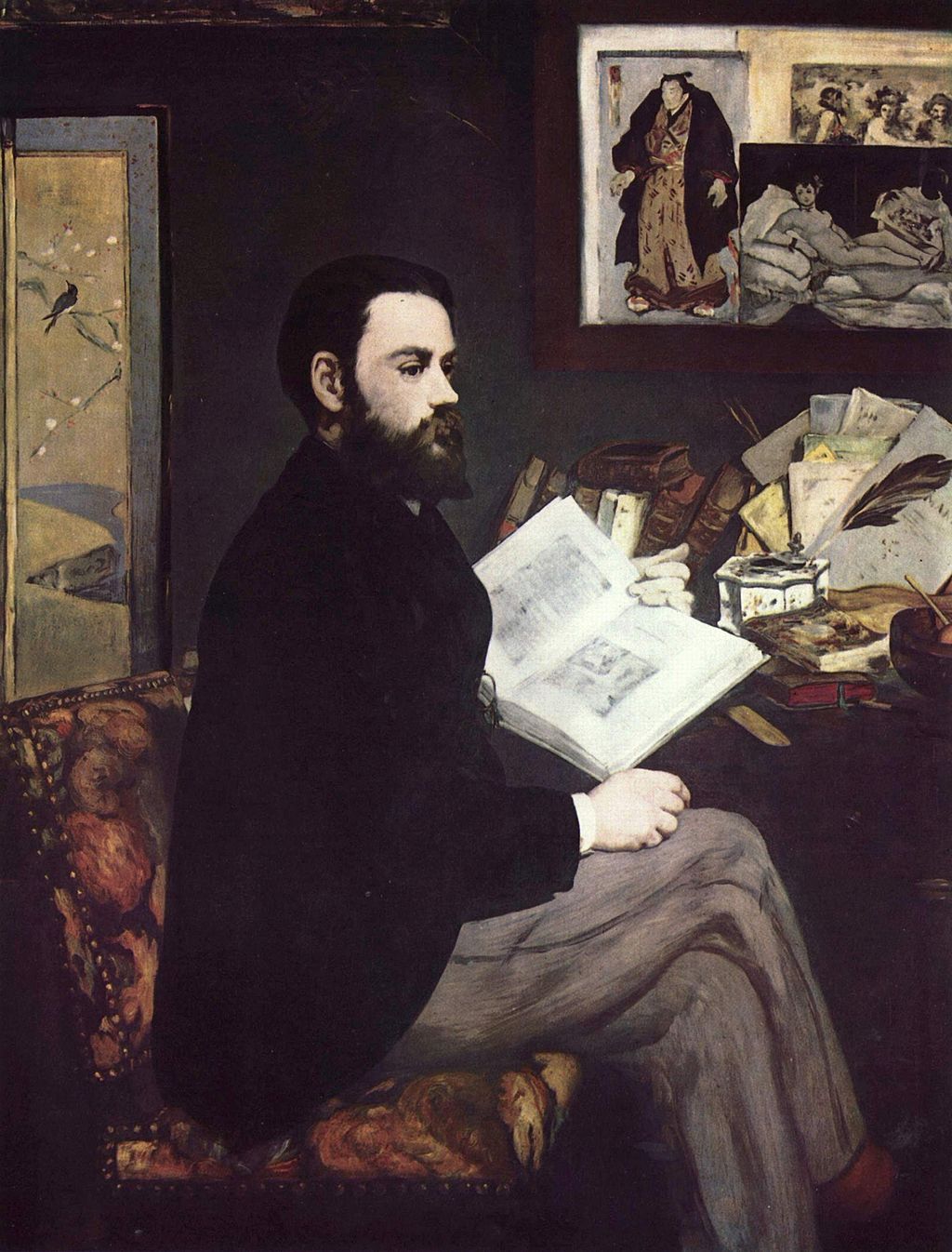
Portrait of Émile Zola, Édouard Manet, 1868
The World's Fair of 1867 in Paris allowed Japan to spread its culture and art in Europe. It was its first official participation in this major event. A sale took place in Paris with no less than 1300 Japanese objects sold.
In 1878, a major retrospective of Japanese art took place during the World's Fair. This event only established the artistic influence of Japan on the Old Continent.
The French composer Claude Debussy was passionate about the sea, he had a copy of "The Wave" in his study. He was inspired by this print for his work entitled "la Mer" (The Sea), Hokusai's work even appeared on the cover of his score on the original 1905 edition.
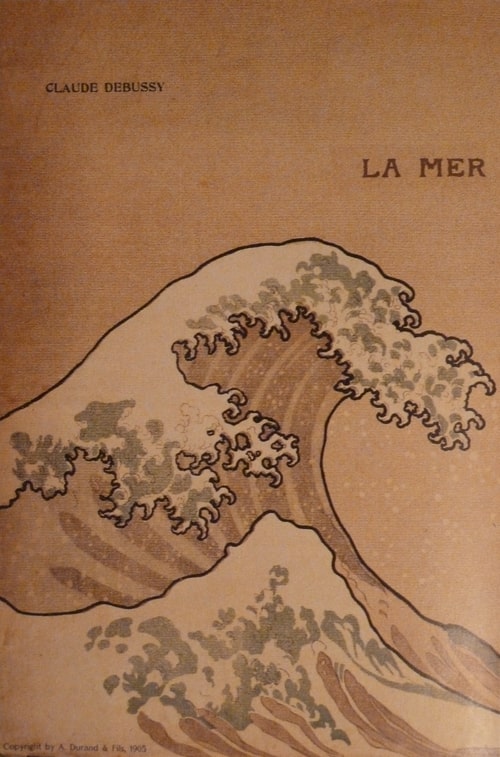
Cover of the original edition of "La Mer" in 1905, reproducing the Wave of Hokusai
A work ingrained in Japanese popular culture and far beyond
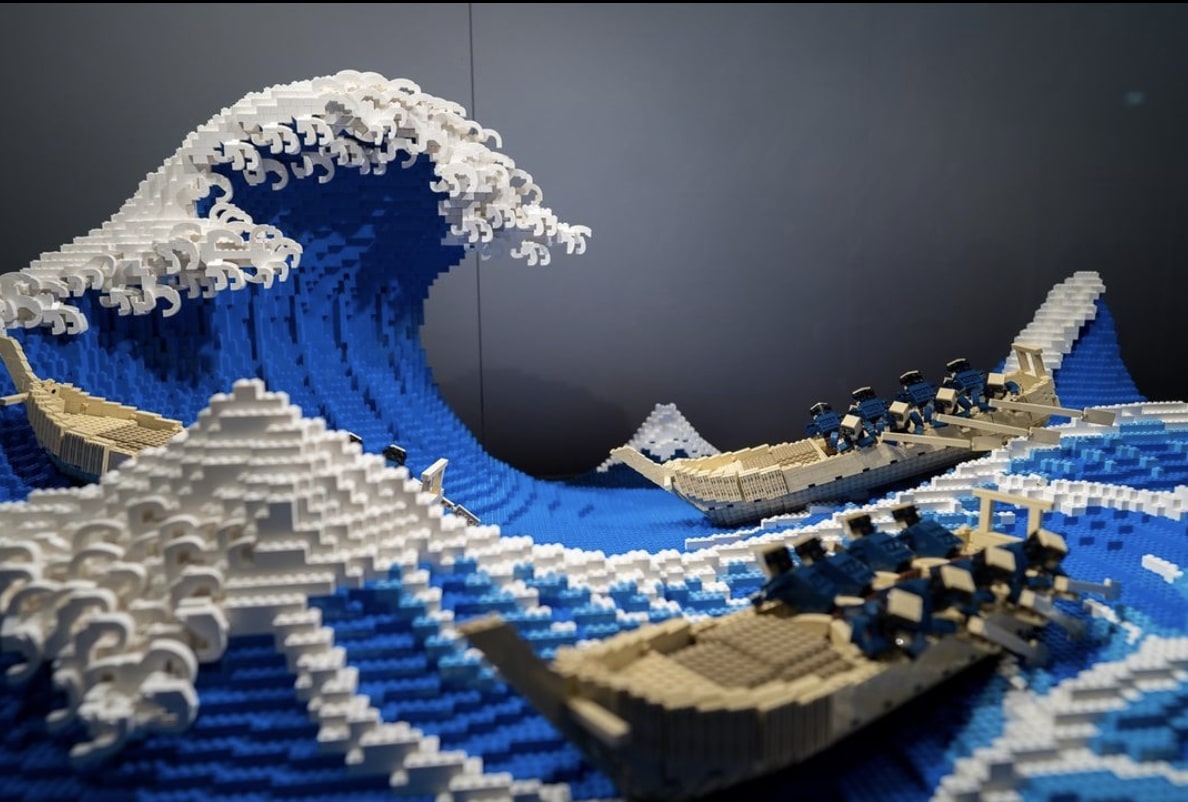
The Wave in LEGO by Jumpei Mitsui
In Japan, this print has become legendary, it even makes the Japanese proud. "The Wave" has been used many times and in different fields all over the world, for example :
- The Quiksilver brand logo is inspired by this work.
- Companies such as IBM, Seiko, Orangina have used it for advertising campaigns.
- There are thousands of products bearing its effigy sold all over the world: puzzles, notebooks, mugs, clothes and even masks...
- "The Wave" has its own emoji, which shows how important it is in popular culture.
- Many people have decided to get the artwork tattooed on their body. It is a best seller in tattoo parlors.
- Recently, a Japanese LEGO professional named Jumpei Mitsui made a huge replica of the artwork with nearly 50,000 LEGO bricks. This amazing construction is on display at the Hankyu Brick Museum in Osaka, Japan.

